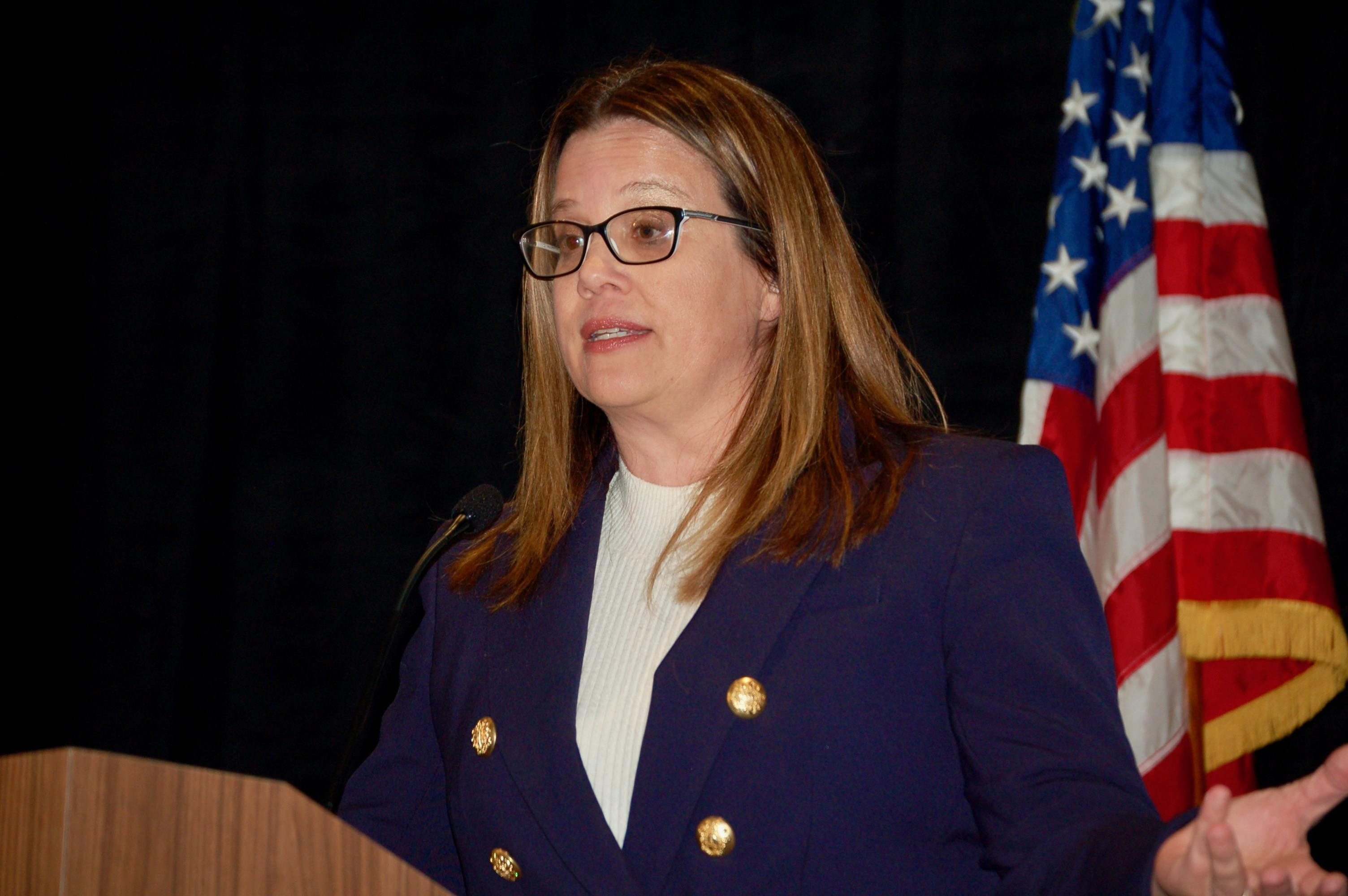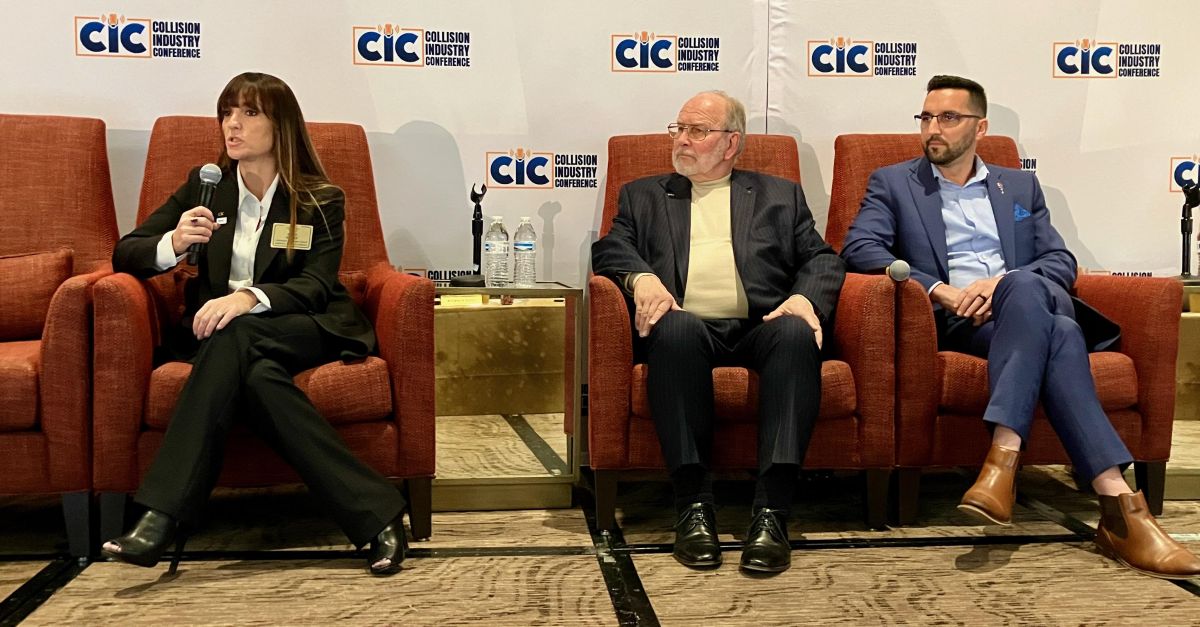In an effort to highlight the cost -- to shops, insurers, consumers and automakers -- of poor-quality collision repairs, the Collision Industry Conference (CIC) Industry Relations Committee earlier this year shared the findings of its study of 26 “relatively late model” vehicles for which significant repair problems were found during post-repair inspections around the country.
In all of the cases, the customer found something they didn’t like about the repair, and therefore had a reinspection done. More than 90% of the 26 were deemed total losses after the post-repair inspection, said Daniel Rosenberger of BASF, a committee member.
“About 50% of them had moderate to severe frame issues that were unaddressed,” he said.
For the subset of the vehicles for which repair cost data was collected, he said, the cost for re-repairs averaged 3.5 times the initial repair cost.
Committee member Erin Solis shared photos and details related to one of the vehicles, a 2016 Subaru WRX for which original repairs cost about $7,000, and the cost for re-repairs was pegged at about $18,500.
 Panel moderator Liz Stein said no one should think poor quality repairs are a problem limited to just DRP shops, uncertified shops or MSOs.
Panel moderator Liz Stein said no one should think poor quality repairs are a problem limited to just DRP shops, uncertified shops or MSOs.
“The customer originally went to the [second] shop [after repairs] for some masking lines, some paint matching issues and stuff like that,” Solis said. “The shops doing these post-repair inspections get a copy of the final bill of what was done originally. So they noticed [the original repairer] had billed for framework, yet there was no evidence of any kind of clamping marks or anything to indicate that the vehicle had been up on a rack, or even measured, or pulled properly. The steering column was also not addressed as instructed in the OEM procedures for post-collision. And I believe that this [repair invoice] did not indicate any kind of post-collision inspection requirements, so it was more than just the steering column. And then there was a lot of fitment issues with some of the parts that were used in the repair.”
The committee said there were similar problems found with many of the vehicles.
“Obviously starting with paint flaws, the lack of pre- and post-repair [safety] inspections was prevalent, lack of a pre-alignment or a secondary alignment after the repairs were done, calibrations just simply overlooked,” committee member Ron Reichen said. “Failure to recognize OEM repair procedures and following a defined process throughout. There were numerous components that were marked on the repair plan as replaced that were either not replaced, or repaired or just simply overlooked. So that’s a lot of what we saw.”
The committee’s presentation focused on the costs of bad repairs to everyone involved. The notes associated with one of the repairs, for example, indicated the customer had brought the vehicle back to the shop that repaired it nine times to try to have the problems addressed.
“That means nine times that customer had to pause whatever was going on in their life to go address something that continuously wasn’t fixed,” committee member Liz Stein said. “It creates frustration, it creates anger, and it creates suspicion and resentment.”
The automakers, she said, developed certified shop programs in part to help avoid such issues. “When there’s a collision repair event, that tests the manufacturer’s brand,” she said. “So when there’s a poor repair experience, that could mean that the customer has a negative brand impression.”
“The repair facility is either spending money to redo the vehicle, or to buy the vehicle back,” Reichen added. “And at the [insurer] level, what happens if that substandard repair isn’t caught and then that vehicle ends up in another loss? The bill-payer now is paying for previously substandard repairs because of this second loss.”
The committee was asked if there were any commonalities among the shops where the poor quality work was done.
“They were all repaired at what we consider legitimate or licensed repair facilities,” Reichen said.
Solis said the committee did not determine whether or not the repairs were made under a direct repair program, but she noted, “I can tell you that all of the ones that I personally went through were not fixed in an OEM-certified repair center.”
But Stein said no one should think poor quality repairs are a problem limited to only DRP shops, uncertified shops or MSOs.
“One job that I was alerted to was a certified shop that left [broken] glass in the back seat and in a [child] car seat, and thought that that was OK, that that was acceptable,” Stein said. “This is a certified shop. So I’m just saying this is a universal problem. It’s easy for us to throw stones, but this is a problem that we are having all over the board. And a good shop can make a mistake. And if you don’t have consistent quality processes and a quality control system lined out, then you’re playing Russian roulette every time.”
She offered the solutions to the issue of poor quality repairs include a robust quality control system in place at shops.
“Making sure that, no matter what, your people are empowered at any point in the process to stop and say, ‘Hey, wait a minute, this isn’t right,’” Stein said. “That if your painter gets something that looks like a train wreck, he’s supposed to send it back to the technician, and that he’s not penalized for stopping the process. Also, that there’s checklists to make sure all procedures were followed.”











John Yoswick